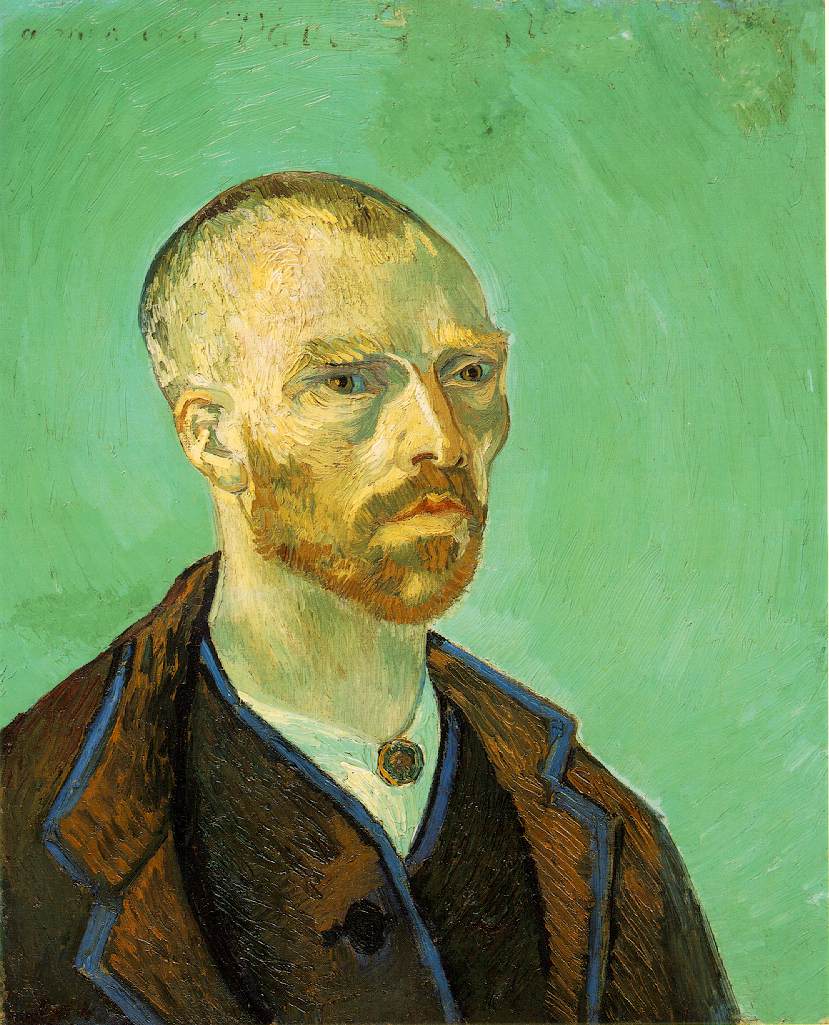The troubled life of Dutch painter Vincent van Gogh took its darkest turn as he murdered his roommate and fellow artist, Paul Gauguin.
Van Gogh was born March 30, 1853, and suffered a lifetime of mental illness, most based in anxiety and magnified by poor nutrition and alcohol. He described his youth as “gloomy and cold and sterile” in a later letter to his brother Theo. Boarding school troubled him as a student, prompting him to leave abruptly. His uncle managed to find him a position as an art dealer, bringing van Gogh to London where he fell in love with his landlady’s daughter. She rejected him, and he fled to Paris, where he lost his job after voicing his opinions that art was not to be treated as a commodity.
After stints as a minister’s assistant, bookshop worker, and missionary, in 1880, he decided to become an artist in pursuit of God’s service. His early work while in the Netherlands was notoriously dark and somber, such as The Potato Eaters with its ugly portrayal of genuine peasants. In 1886, he moved to Paris to study art further, moving in with his younger brother Theo, who had always supported Vincent financially and emotionally despite, or because of, his worries about Vincent’s mental health.
Van Gogh’s work brightened, and Theo used his art-dealer connections to introduce him to many other artists whose work helped to influence van Gogh’s growing styles. After some 200 paintings and two years imbibing and smoking too much, van Gogh sought to leave the city in pursuit of a dream of an artists’ colony. He settled in Arles in the south of France, much to the chagrin of locals and, after ten months, persuaded his friend Paul Gauguin to join him.
Gauguin, five years van Gogh’s senior, was a man of experimentation and a leader in the Symbolist movement. He held some Peruvian blood and had lived in South America in his youth. After serving in the French Navy, marrying a Danish woman, and beginning a career as a stockbroker, he quit it all in 1885 to paint full time. Gauguin had met van Gogh in 1887, and the two shared similar experiences with depression. In October of 1888, he moved to stay with van Gogh in his famed Yellow House in Arles, beginning a nine-week deterioration of their friendship that would lead into an altercation where van Gogh slashed Gauguin’s throat with a razor.
According to interviews, van Gogh immediately regretted his action and attempted to save Gauguin by gingerly holding his throat, but the latter bled to death. Neighbors were roused by van Gogh carrying Gauguin’s body into the street and screaming for the police to arrest a murderer. Van Gogh was indeed arrested and sentenced to death, though his brother Theo successfully campaigned (and bribed) for Vincent to be placed permanently into a mental institution. There van Gogh was allowed to paint and was studied by eminent psychiatrists.
Great shock was raised in Paris, London, and Brussels at word of the Murderer-Artist, and galleries were filled with his works, instantly in demand and expensive. Van Gogh had achieved fame, but he remained in horrid mental condition at the guilt of murder. When his brother died in 1891 of syphilis’s dementia paralytica (believed from over-celebration at his newfound wealth), Vincent stopped painting and became increasingly suicidal, famously stabbing out his left eye with a paintbrush. After months of interrupted attempts, van Gogh hanged himself by his own shirt.
The shock increased throughout Europe’s artistic circles, and the new reaction was that the post-Impressionist style was too much for the human mind. It became unpopular among the wealthy to pay artists to paint unrealistically, just as one would not pay to see dogs fight. Underground galleries continued to show lesser known artistic experiments, but New Realism dominated the art world until the horrors of World War I gave a new call for escapism. Haunting Abstractionism and Surrealism of the Mad Generation exploded across Europe and North America in the 1920s and ‘30s, which itself would ultimately fall as the pendulum of taste swept back toward realistic depictions in art for the next twenty years.
–
In reality, van Gogh only threatened Gauguin with the razor. He panicked at his actions and fled to a local brothel, where he famously cut off the lobe of his left ear and gave it to a prostitute. Gauguin never saw van Gogh again, instead going about finding his “tropical paradise” and pioneering Primitivism. Van Gogh would spend the rest of his life in and out of hospitals while also painting some of his best known works such as Starry Night. He went for a walk in a field on July 27, 1890, and shot himself in the chest.

This confuses me
ReplyDeletewe reverse the above concept on Today in Alternate History in our own fictional mash-up The miracle at Auvers-sur-Oise saves the Dutch master in which we explore the theory Van Goph was himself almost killed in a fatal accident.
ReplyDeleteA further variant of this story arc is available on the Today in Alternate History web site at the hyperlink
ReplyDeleteMay 23, 1878 #OnThisDay Vincent Van Gogh murdered his gentle mannered brother Theo.
and the reversal December 23, 1888 - Van Gogh Murdered by Paul Gauguin.
ReplyDelete